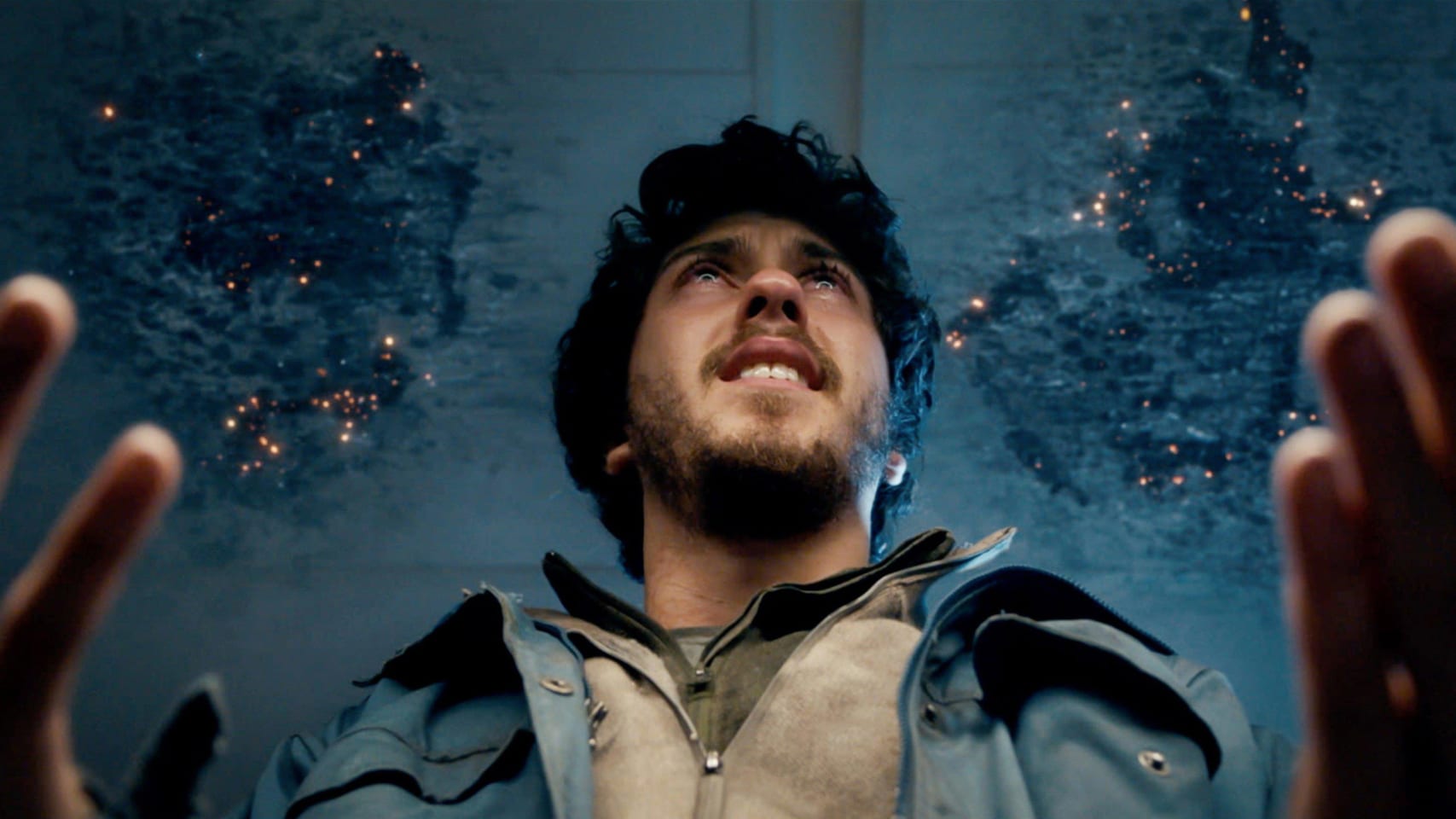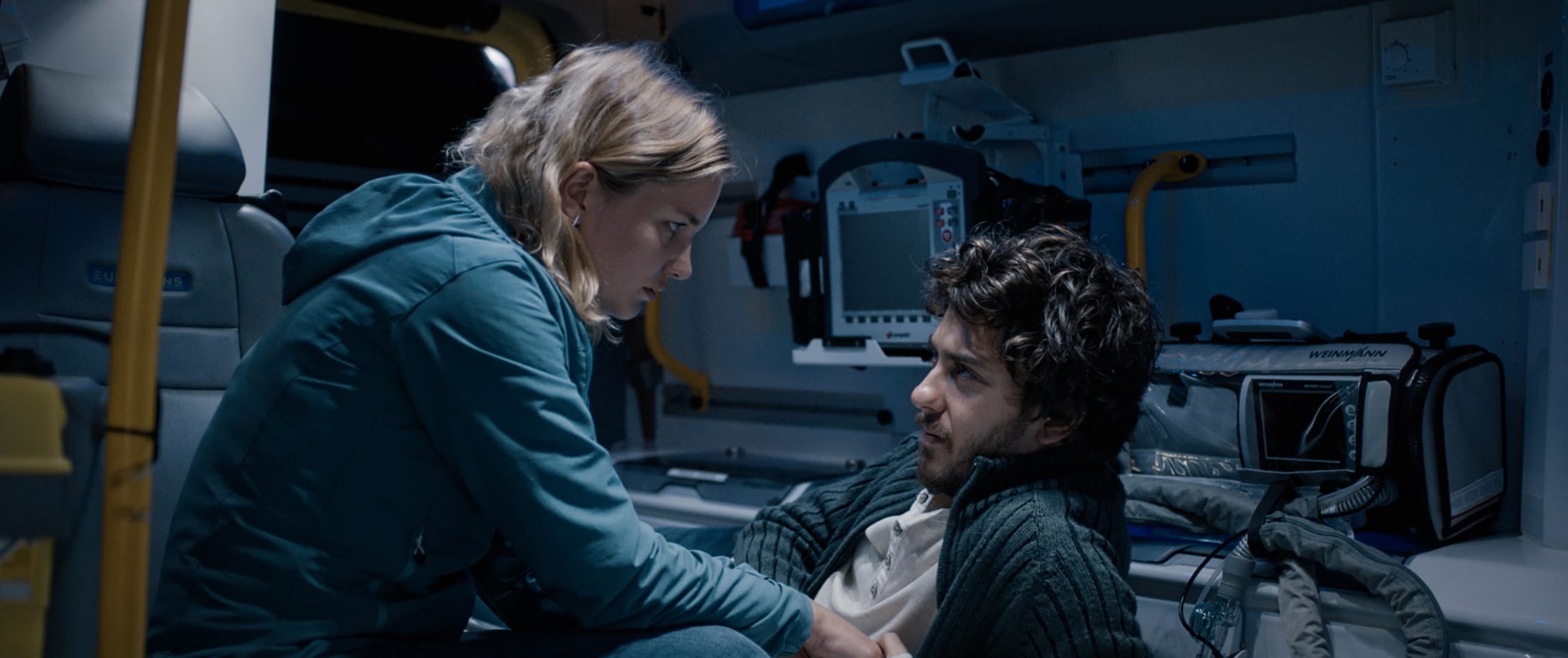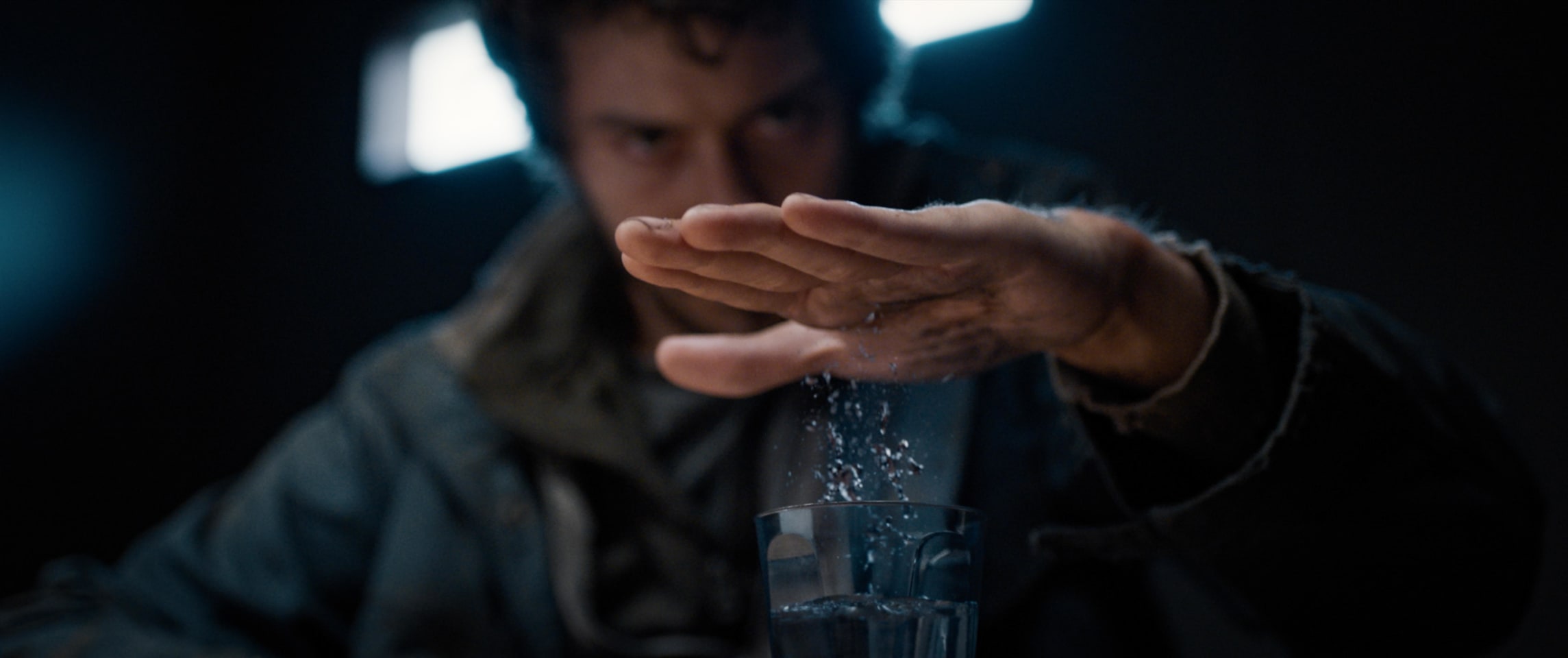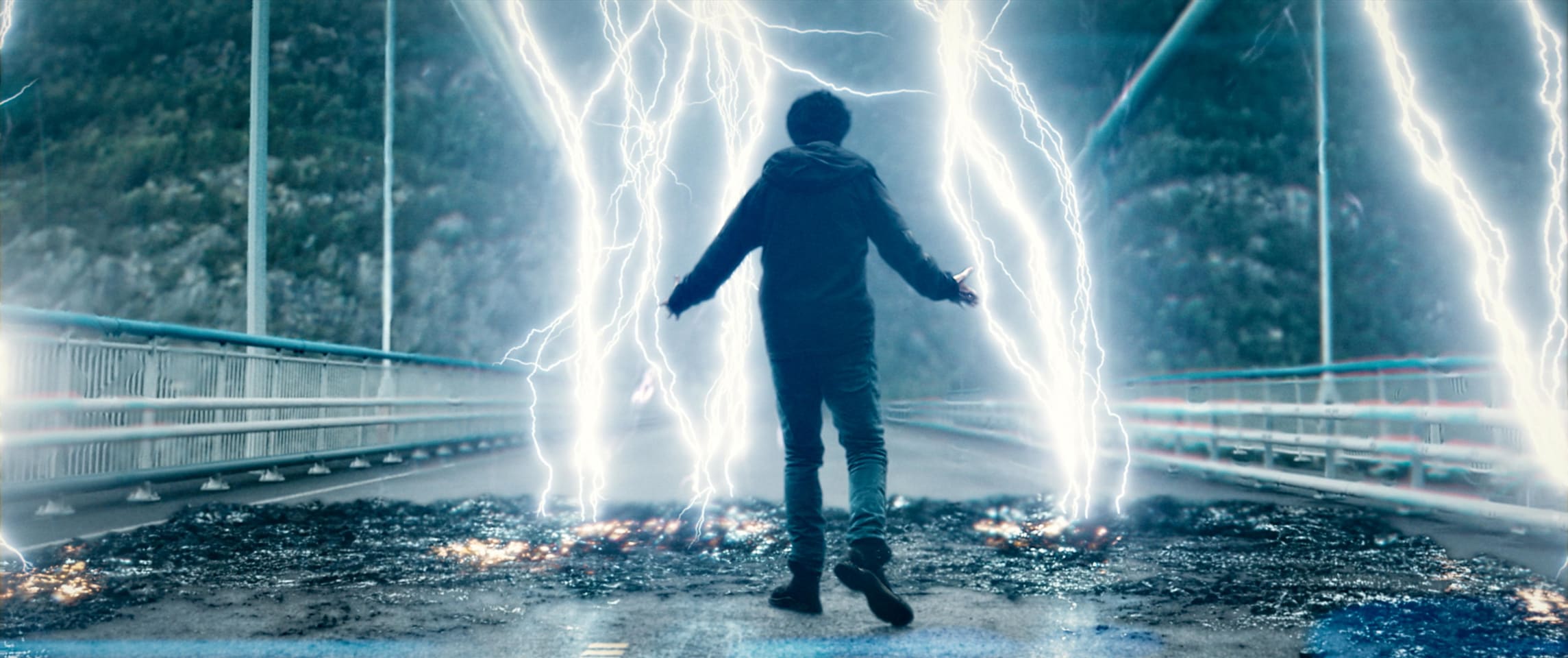This week, a different kind of superhero origin story hits theaters and VOD. Mortal is not your average Marvel or DC movie.
It tells the story of Eric (Nat Wolff), an itinerant young American man living in Norway. After a tragic accident centered on him results in multiple deaths, Eric becomes homeless, moving from place to place in an attempt to avoid people while grappling with strange and terrifying powers he can’t seem to control. After another accident winds up with him being taken into police custody, Eric is questioned by a young psychologist, Christine (Iben Akerlie). Christine forms a bond with Erik and gets him to open up for the first time. When he’s forced to go on the run, pursued by both American and Norwegian authorities, Christine goes with him and together, they’re determined to discover the origin of his powers. Awesome powers, however, often come with a steep price.
I sat down for a Zoom interview with director André Øvredal in the lead-up to the movie’s release this week. Our conversation touched upon how this is a completely different sort of dark superhero movie, whether or not someone can be redeemed after a certain point, the beauty of the natural world, and growing up with Nordic myths.
Note: This interview has been lightly edited for length and clarity. Mild spoilers are also included. The beginning and end of the section that includes spoilers have been marked.
Atom Tickets: You did something I wish we did more in superhero origin stories, which is explore is the real body horror of it all. It’s something comic book movies rarely touch upon, even when you consider the idea a person’s very DNA is changing. What made you want to lean into that raw and gory aspect of it?
André Øvredal: It’s as you say, it’s something that feels as though it’s sometimes missing [from movies] because the powers and the wildness of it all can be so intense sometimes. I don’t understand how a person could not be affected by it, it feels false not to. So I wanted to have a character that was damaged physically as well as psychologically to lead you through it. I just found that to be fascinating. And in a low-budget movie like this, you can dare to do that. In a $200 million budget Marvel movie, you couldn’t – well, I don’t think you could, I don’t know. But here, we could.
You said he’s psychologically damaged. I found it interesting Nat Wolff plays Erik like a person with anxiety. Is that a result of the trauma he’s received since gaining his powers or was he like that prior to the trauma?
AO: Well, we constructed a backstory. There wasn’t really any point in putting it directly into the movie because it’s such a deep backstory, but I think with Erik, he’s grown up out of touch with who he is. So in a way, it’s created a personality for him from childhood that’s yearning, wanting for something he doesn’t understand. Maybe he’s always had an inkling of these powers – again, it’s a deep backstory so that doesn’t really matter on-screen – but he could have had these wounds on his body show up from childhood, who knows? And that might have affected his psychology, his sense of security. So many things might have gone on in his past before the movie even starts.

It’s a deceptively hard role to play. You need someone who is young but old before their time. Someone who is vulnerable but also a little menacing. Was Nat always the first choice? How did you decide, ‘Yes. This is it. This is the guy I want?’
AO: I had just a wonderful Skype with him where we just discussed the character. I found it intriguing that I hadn’t really seen him do a role like this. I saw that ability to tap into darkness, as you said, in him while talking to him, but I hadn’t seen it on screen before. I’d only seen the charming Nat Wolff or the fun Nat Wolff, and now he’s done more serious things but at the time I hadn’t seen them. I found that balance between the innocence and the menace, as you say, those elements were all in place. He’s such an intuitive actor. He works in the present, the here and now, and it’s really great to see that in play.
By the way, I’m really digging your Scary Stories to Tell in the Dark Harold t-shirt.
AO: Oh, you recognize it? [laughing]
I do! I interviewed you and Guillermo del Toro for it last year at the junket in Los Angeles.
AO: That’s right, it was in Los Angeles. Those things are always so weird.
But even weirder now in a post-Zoom world.
AO: Yes, definitely.
[Warning: The following section of the interview contains mild spoilers.]

Without giving anything directly away, you make some very distinct choices and have some very clear things to say about human nature, both for those with power and the powerless. What was it that intrigued you about leaning in that very specific direction, particularly at the end?
AO: What I found interesting is that as human beings, we’re a lot of grays. We have our dark sides, we have our good sides. I found that to be a big, big part of the story I wanted to tell about Erik and Christine and the fact that he could be dangerous to her – not because he wanted to be, but he was. To me, this movie is really about intimate relationships, a character movie about them finding each other. In the end, the rawness of what had to happen there, the brutality of what had to happen in the final moments of the movie, was always part of the story to me. It had to get there. For me to make this movie, for it to work for me, it had to deserve to get to that point. And then I loved being able to use his dark side, to twist the movie around completely in those final moments. So if we ever get around to making a sequel, you don’t really know what that movie will be. It would be very interesting to see where that movie would go.
Definitely. I found myself thinking at the end, ‘Whew, that was a hard choice.’ Is there a way, after events like this, for a redemption arc? Do you think it’s possible for a character to be redeemed?
AO: I don’t – which is why I find it intriguing when movies are able to do it. If the possibility of a sequel were ever to arise, it would be interesting to explore. Is that even a possibility? Like in A Clockwork Orange – a movie that I love – Kubrick actually does completely twist it around, portraying this character who is a menace, just the most horrible, horrible person you could create on-screen, and then victimizes him by showing the authorities are worse. They created this monster and in a way, they’re even worse. So it twists your understanding of humanity, of what’s good and what’s bad and who’s at fault. I find that very intriguing. Is it possible to redeem him? It’s hard. It’s a very tough one. But it’s a very intriguing question to answer in a movie.
Right. I don’t know if one could come back from this, but I’d be interested to see you try.
AO: Exactly. It’s that challenge.
[End spoilers.]

Juxtaposed with the raw and painful body horror is the incredible detail and beauty of the natural world and the elements. This is almost as much an environmentalist movie as anything else as it really showcases the natural beauty of the setting, not just from the landscapes but from the small details.
AO: That was part of the concept and part of the script and part of everything, actually. The movie is about nature. It’s about control of natural elements, about the atmospherics we have around us. I found the connection between a human being in nature is a huge theme for me. This is a movie that, if it were a $200 million Marvel movie, it would take place in New York. But it’s taking place in the wilderness, the countryside of some obscure place in the world, and I always wanted to fill it with the sense of, exactly what you said, the details, the effects of what he could control with water and humidity and everything and make it all into one environment.
Obviously, most of his powers had to come from CGI but I am curious about some of the scenes that might have been practical effects, particularly with the scenes involving fire. Were those all CGI or practical or a mix?
AO: It’s a balance between physical effects and CGI. A lot of the stuff in the police station, for example, is physical, the burning of the walls and the darkness, but then it’s augmented with VFX. It’s expanded upon. That’s the best way to use VFX, anyway, I think. You do as much as you can physically and then use VFX to augment what you’ve done. It’s something Guillermo del Toro is really adamant about on his movies. And also in the forest, we brought in trees that were pre-burned and placed them there in the forest and added smoke and stuff. But some of the fires are digital elements, some is real but posted in. It’s a mix of several things.

Last question: Did you grow up with the myths of the Nordic gods? Was that part of your upbringing or something that was more like, eh, those are just old legends?
AO: In Norway, it becomes a little bit – you know, you’re spoon-fed it from childhood, it’s all around you.
I imagine it’s a lot like growing up in, say, Ireland with legends of the faerie folk and that folklore.
AO: Right. It’s all around you. Even the names “Thursday” and “Wednesday,” those are “Thor’s Day” and “Odin’s Day.” It’s so much around you that it becomes almost second nature. But then you don’t really dive deep into the myths unless you want to. So I never really grew up with that side of the mythology. I grew up with our fairy tales, what I based Trollhunter on, and those are much closer to me. But the myths of the Nordic gods are such a part of the Norwegian world that I’m honored to put some of these things on the screen. It’s just a privilege.
Mortal is in theaters and on-demand this Friday, November 6th.















